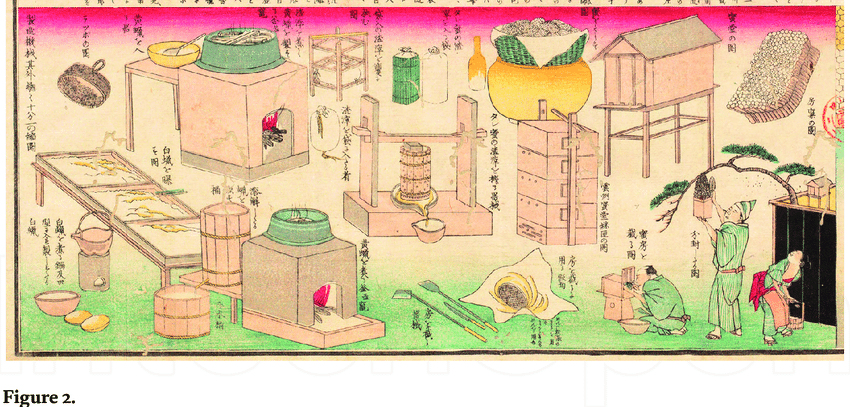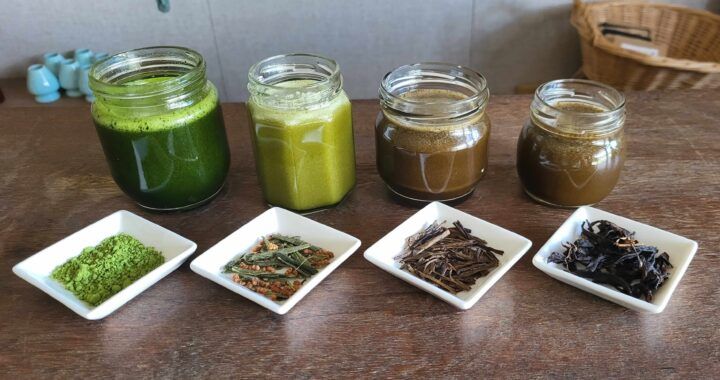By Jason McLoughlin – Intern #178
Beekeeping, primarily for honey production, has a long and varied history around the world and began around 10,000 years ago with evidence of beekeeping in ancient Egypt, China and Greece amongst others. In Japan, the oldest record of beekeeping can be traced back to the 7th century in Nihon Shoki which is the second oldest book of classical Japanese history. Honey was highly sought after and valued and the art of keeping bees was seen as almost semi magical at certain points in Japan’s history. Many records also show offerings of honey being made to the Japanese Emperor as well as bees being released on Miwa Mountain which is a site of religious significance to this day in Japan.

The native Japanese honeybee (Apis cerana japonica) is an incredibly docile species of honeybee which is noted for its low levels of aggression. However, since the introduction of the European honeybee by westerners trading with Japan in the mid-1800s following the convention of Kanagawa and subsequent opening of Japan’s borders to trade with the west the European honeybee has been the primary honeybee species kept by Japanese beekeepers. The European honeybee, although more aggressive than its Japanese cousin, has far higher levels of honey production and is therefore more well suited for commercial honey production in Japan. Honey is very popular here, however, most honey consumed in Japan is imported from abroad. Domestic honey production is less than half the level it was in 1985.
Although a hive of European honeybees produce yields several times that of their Japanese counterparts, they are somewhat lacking in other regards. A big threat to hives of European honeybees in Japan is the Asian giant hornet (Vespa mandarinia). These giant hornets can completely ravage a bee colony upon entering in search of food (namely the bee larvae). The native Japanese honeybee has evolved along side the giant hornet and they have developed defensive measures to curtail the unwanted appearance of one of these rather scary looking hornets in their hive. The bees surround the hornet in a large ball and flap their wings aggressively to raise the temperature in the ball, this also causes the carbon dioxide in the ball to rise, and this combination of heat and CO2 levels proves too much for the hornets and kills them. Unfortunately, both for the bees and their keepers, European honeybees did not develop this defensive strategy and are rendered defenceless when faced with this unwelcome guest in their hive.
As part of my project here at Obubu I, as a beekeeper myself back in Dublin, wanted to see about creating honey infused with various teas. Sourcing locally sourced proper honey that was unfiltered and not blended was one of the biggest difficulties when setting out to begin this project. Thankfully, with the help of my fellow Obubu team members (special thanks to Noe and Alix) I managed to source some honey in Nara. I made four batches of honey in the end, mixing each with our powdered teas (Matcha, Genmaicha, Hojicha and Wakoucha). The matcha honey was my personal favourite, it has a rich emerald green colour and tasted fantastic (although I may be biased as I absolutely adore matcha). The genmaicha honey was also particularly delicious, the colour was a lighter green and the roasted rice taste of the genmaicha really paired well with the sweetness of the multifloral honey. Unfortunately for the genmaicha honey, it originally had a beautiful lime green colour to it and was very visually appealing but when I came back to the jar of genmaicha honey 2 days later the colour has dulled quite considerably and has turned browner than it was before. The taste of the genmaicha honey was thankfully not changed in line with this visual transformation. The Wakoucha honey was very rich, and it must be noted both the wakoucha honey and hojicha honey were less visually appealing than the matcha and genmaicha honeys. The Hojicha honey kept its distinctive roasted hojicha flavour and had a warmth to it that was lovely. All in all I think the tea infused honeys were a success and I think particularly the matcha honey would make a great product. I would love to try making a matcha infused creamed honey as I think the texture of a creamed honey would suit the matcha flavouring better, unfortunately I did not have the relevant equipment or an adequate quantity of honey to attempt to make a creamed matcha honey. When I eventually return to Dublin I would love to explore the possibility of making a creamed matcha honey and or genmaicha honey with the beekeeping company I work closely with.

